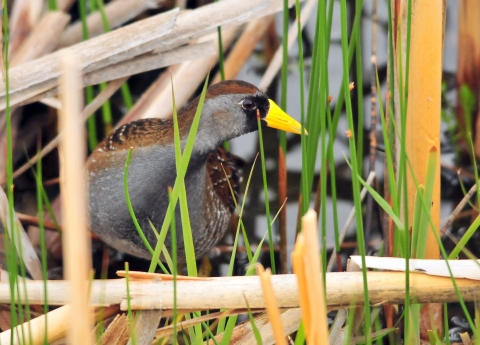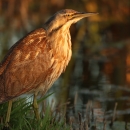Featured Species
The Yakama Valley, which Toppenish National Wildlife Refuge sits in, has a broad collection of habitats and thus a diversity of species. Natural wetlands, such as sloughs and oxbows, are flanked by riparian riparian
Definition of riparian habitat or riparian areas.
Learn more about riparian areas. Many species of migratory waterfowl and nongame birds, such as rails, Savannah sparrows, and northern harriers, use the wetlands for feeding and nesting activities.
Native shrub-steppe, characterized by big sagebrush sagebrush
The western United States’ sagebrush country encompasses over 175 million acres of public and private lands. The sagebrush landscape provides many benefits to our rural economies and communities, and it serves as crucial habitat for a diversity of wildlife, including the iconic greater sage-grouse and over 350 other species.
Learn more about sagebrush , greasewood, bitterbrush, rabbitbrush, and native bunchgrasses, covered upland areas. Loggerhead shrikes, long-billed curlews, sage thrashers, Brewer’s and sage sparrows, burrowing owls, and California quails are only some of the animals that use the shrub-steppe.
The combination of habitats is a natural magnet to both resident and migratory wildlife. Seasonal changes in the habitats result in a change in numbers and diversity of wildlife using the refuge through the year. In spring, many shorebirds probe the exposed mudflats in the wetlands. Waterbirds also wade through the shallow seasonal wetlands in search of food. Phalaropes, dowitchers, yellowlegs, and western, least and spotted sandpipers are a few of the shorebird migrants seen here. Other spring migrants, such as swans, lesser and Taverner’s Canada geese, and many species of ducks forage and rest on refuge wetlands.
Many birds, like the great blue heron, black-crowned night heron, bittern, sora, and Virginia rail nest on Toppenish National Wildlife Refuge. American avocets, killdeer, snipe, and long-billed curlews also breed here.
Some ducks—mallards, gadwall, cinnamon teal and wood ducks—also nest here. Great horned, long-eared, short-eared, and burrowing owls are known to nest on the refuge, along with kestrels, red-tailed hawks, and northern harriers. Other raptors using the refuge include bald and golden eagles, rough-legged and ferruginous hawks, peregrine and prairie falcons, and sharp-shinned and Cooper's hawks.
BTW: The bird pictured is the secretive sora. Despite being the most common and widely distributed rail in North America, the sora is seldom seen. Its not uncommon to hear its distinctive call, which is often described as ‘descending and whinny,’ but actually seeing one amidst the cattails is much more difficult. With their small bodies and long feet, soras can walk on the tops of aquatic vegetation.
Here's our complete Bird List.



